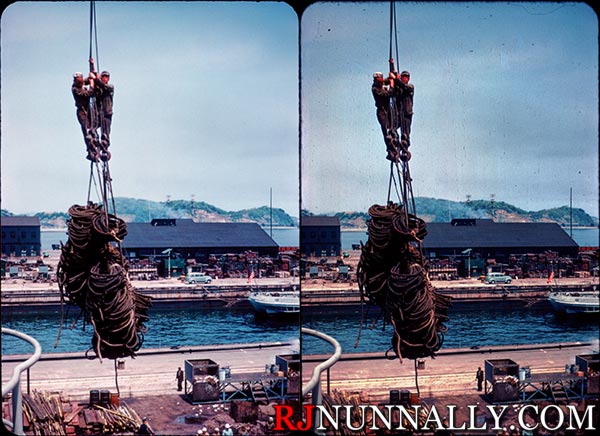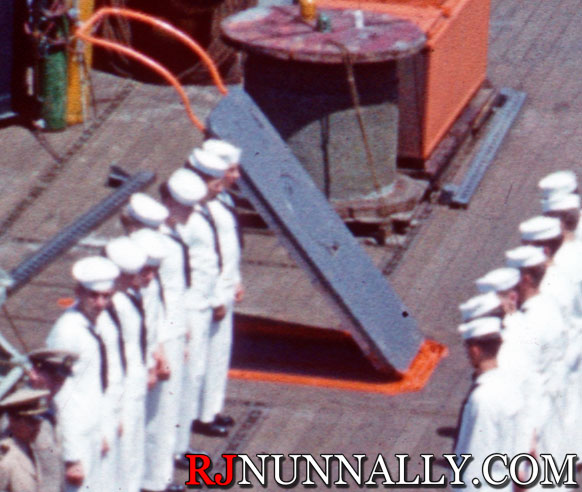In conjunction with the telecine project (updates soon!), I purchased a Nikon Coolscan V, also known as the Nikon LS-50, to scan in my Grandfather’s 35mm Kodachrome slides from the early 1950s. The Coolscan V is appealing for its 4000 dpi optical resolution and a fourth version Digital ICE automatic dust removal. However, Digital ICE does not work with all films.
ASF’s, now Kodak’s, Digital ICE performs automatic dust and scratch removal – the ICE being short for “Image Correction and Enhancement.” It works by scanning a fourth, infrared, color layer in addition to the conventional red, green, and blue layers that is used to create a dust mask which is later subtracted from the scan. The infrared light is expected to pass through the film emulsion but not through dust. So why doesn’t it work with all films? It turns out that black and white film uses silver nitrate for the emulsion layer, and silver nitrate also blocks infrared light, rendering Digital ICE useless. So now you’re probably asking, “So what does all this have to do with Kodachrome? It’s color!”
Kodachrome is not a normal color film and shares more in common with black and white film than color negatives or the typical color reversal (positive) film. This is easily illustrated by looking at a Kodachrome emulsion which has a 3D appearance – these are the color layers in the film, and each color layer is very similar to traditional black and white film. In fact, Kodachrome starts out as black and white only to slowly become color during its long and convoluted development process. These days Kodachrome can no longer be developed as color film because the chemicals necessary for development are long out of production. Owing to its similarity to black and white film, old, undeveloped Kodachrome can still be developed in black and white!
So how does the Coolscan V’s implementation of Digital ICE work with Kodachrome? The answer is “it sort of does.” The Coolscan V does a good job with removing dust and an alright job removing defects from a slide. That’s where the good ends – Digital ICE detects strong contrast areas as defects and tries to remove them, leading to blurry images with noticeable defects at 100% crop. Where real defects, like scratches, exist, a mark is often left on the image although it is significantly less noticeable than an uncorrected scan. Furthermore, I have noticed instances where defects are seemingly introduced to the scan.
Pay particular attention to the orange handle and the sailors’ faces. ICE detects these fine details as defects and completely mangles the image. I think the Coolscan V still manages to extract more detail with ICE enabled than my Epson V330 flatbed does without ICE.
Digital ICE reduces images sharpness when fully enabled, even when used properly with color negatives. This side effect is worsened with Kodachrome – even at web sizes, the loss of sharpness is clearly apparent.

ICE (Fine) on the left, without ICE on the right. Scanned using the “Positive” setting, not Kodachrome.
Even with the Coolscan V’s more advanced fourth version of Digital ICE, it is clear that Kodachrome does not play well. Home users will likely be happy with the results, but a professional will not. There is exactly one scanner on the market that can properly remove dust and scratches from Kodachrome, and that is the Nikon Super Coolscan 9000. I will continue to leave Digital ICE enabled since the corrected, dust free slides look much better than sharp and dusty slides to my eyes.



